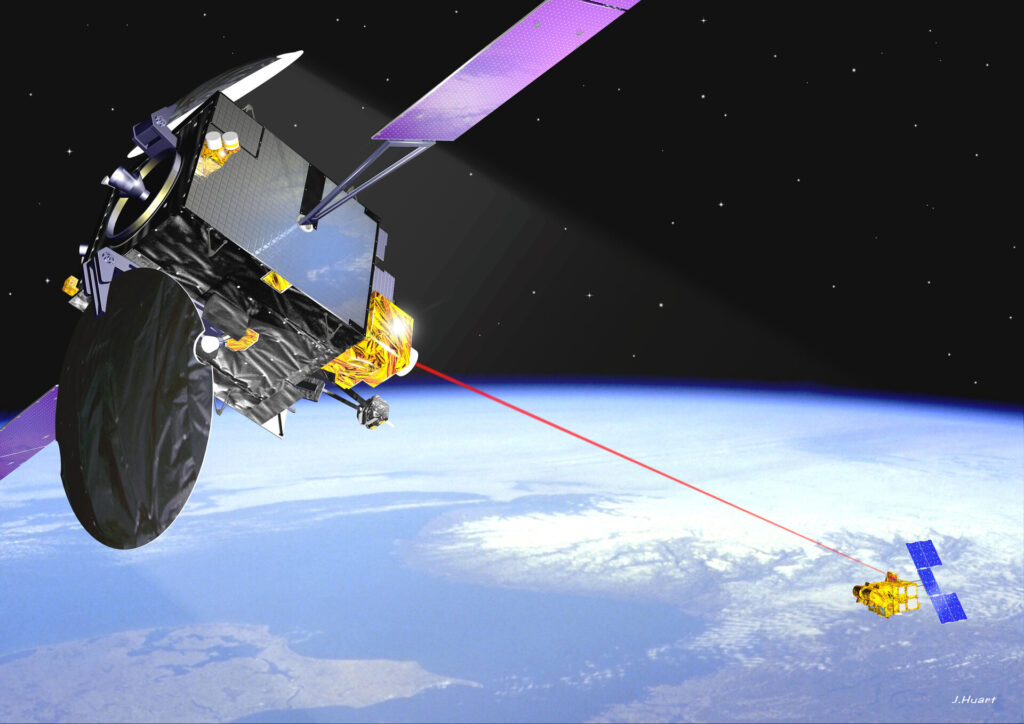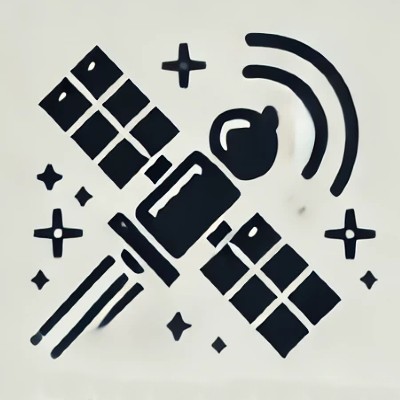In the rapidly evolving landscape of satellite communications, laser data transmission has emerged as a transformative technology, offering unprecedented data rates and enhanced security. This advancement holds significant promise for the Internet of Things (IoT), enabling more efficient and reliable connectivity across the globe.

The Rise of Laser Data Transmission in Satellites
Traditional satellite communications have predominantly relied on radio frequency (RF) transmissions. While effective, RF systems face limitations in bandwidth and are susceptible to interference. Laser communication, also known as optical communication, utilizes light to transmit data, offering several key advantages:

Higher Data Rates
Laser systems can achieve data rates magnitudes higher than RF systems. NASA’s TeraByte InfraRed Delivery (TBIRD) program demonstrated a 200 Gbps downlink from a CubeSat, a milestone in space-based laser communications.

Enhanced Security
The narrow beam divergence of laser transmissions makes them less susceptible to eavesdropping and interference, ensuring secure data links—a crucial feature for commercial and defense applications.

Spectrum Efficiency
Laser communications operate in the optical spectrum, alleviating congestion in the increasingly crowded RF spectrum and eliminating the need for spectrum licensing.
Implications for IoT
The integration of laser data transmission in satellite systems has profound implications for the IoT ecosystem:
Global Coverage: Low Earth Orbit (LEO) satellites equipped with laser communication terminals can provide ubiquitous connectivity, reaching remote and underserved regions. This global coverage ensures that IoT devices, regardless of location, remain connected, facilitating applications like environmental monitoring and asset tracking.
Low Latency: The high-speed nature of laser communications reduces latency, enabling real-time data transmission essential for time-sensitive IoT applications such as autonomous vehicles and industrial automation.
Energy Efficiency: Laser communication terminals are compact and consume less power compared to traditional RF systems, making them ideal for small satellites and IoT devices where energy efficiency is paramount.
Cailabs: Pioneering Laser Communication Solutions
A notable player in this domain is Cailabs, a French company specializing in innovative optical solutions. Leveraging their proprietary light-shaping technology, Cailabs has developed the TILBA® product line, enhancing the performance and reliability of laser communication systems.
In a groundbreaking collaboration with Unseenlabs, Cailabs participated in the KERAUNOS project, achieving the first high-speed optical satellite communication between a nano-satellite in low Earth orbit and a commercial optical ground station. This successful demonstration underscores the potential of laser communications in revolutionizing satellite-based IoT connectivity.
Future Outlook
As laser data transmission technology matures, its integration with satellite networks is poised to redefine the IoT landscape. The ability to transmit vast amounts of data securely and efficiently from space will unlock new possibilities for IoT applications, from smart agriculture to disaster response. Companies like Cailabs are at the forefront of this revolution, developing the infrastructure necessary to support the next generation of IoT connectivity.
In conclusion, laser data transmission from satellites represents a pivotal advancement in communication technology, offering high-speed, secure, and reliable data links. Its application to IoT not only enhances existing capabilities but also paves the way for innovative solutions to global challenges.